Ascending the iconic Kilimanjaro via the Marangu Route is a popular choice for many adventurers. Known as the "Coca-Cola" route, this 6-day journey offers a comfortable and manageable trek to the roof of Africa. Trekkers can expect well-maintained paths, hut accommodations, and support from experienced guides – all of which contribute to a memorable and successful summit attempt. While the gradual ascent through diverse ecosystems aids in acclimatization, the challenge of overcoming altitude sickness remains a significant consideration for those seeking to conquer this magnificent mountain. Delving deeper into the Marangu Route’s unique offerings can provide valuable insights for aspiring Kilimanjaro climbers.
Key Points
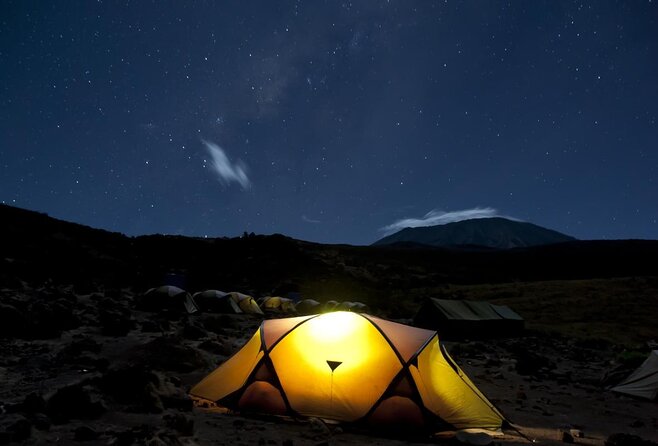
- The Marangu Route, also known as the "Coca-Cola" route, is the most accessible and popular option for a Kilimanjaro climb, featuring gentle slopes and hut accommodations.
- Thorough preparation is essential, including cardiovascular and strength training, proper gear, and gradual acclimatization to minimize the risk of altitude sickness.
- The Marangu Trail experience offers a diverse ecosystem, from rainforests to alpine deserts, with experienced guides enhancing the immersive climbing adventure.
- Proper acclimatization is crucial, as the gradual ascent helps the body adjust to the decreasing oxygen levels at higher altitudes.
- The support team of professional mountain guides, porters, and a skilled cook plays a vital role in ensuring the safety and well-being of the climbers throughout the trek.
Kilimanjaro’s Iconic Marangu Route

The Marangu Route, often referred to as the "Coca-Cola" route, is one of Kilimanjaro’s most popular and well-established trails.
It’s known for its gentle slopes and hut accommodations, making it accessible for climbers of various fitness levels.
The route takes hikers through lush rainforests, moorland, and the final push to the summit through the alpine desert.
While the Marangu Route may be less challenging than other routes, it still demands a strong level of physical fitness and mental determination to reach Kilimanjaro’s iconic peak.
The route’s familiarity and infrastructure provide a comfortable and supported climbing experience for those seeking an iconic Kilimanjaro adventure.
Here are more great tours and experiences we've reviewed in Moshi
Preparation for the Climb
Preparing for a Kilimanjaro climb takes thoughtful planning and dedication. Climbers must ensure they’ve the necessary fitness, equipment, and acclimatization to handle the physical demands of the journey.
Proper training regimens, including cardiovascular exercises and strength training, are essential. Climbers should also acquire the right gear, from sturdy hiking boots to warm layers and rain protection.
Acclimatizing to the high altitude is crucial, and most Kilimanjaro routes include gradual ascents to allow the body to adjust. Climbers should consult with experienced guides and tour operators to ensure they’re fully prepared for the challenges ahead.
With the right preparation, the Kilimanjaro climb can be an immensely rewarding experience.
Packing Essentials
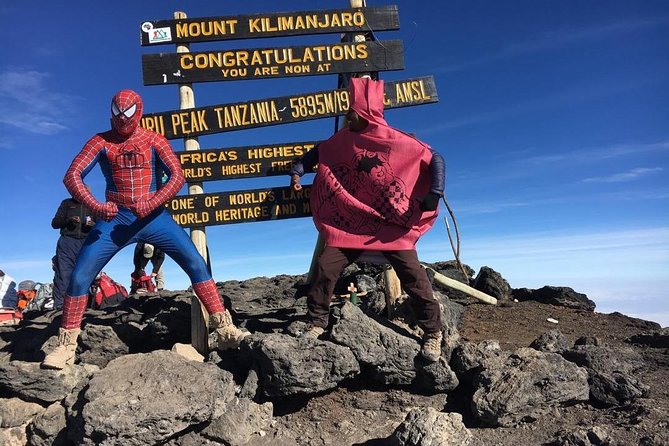
When embarking on a Kilimanjaro climb, packing the right essentials is crucial for a successful and comfortable journey. Climbers must be prepared for a wide range of weather conditions and terrains. To ensure you have everything you need, consider the following packing list:
| Essential Item | Recommended |
|---|---|
| Hiking Boots | Waterproof and broken-in |
| Base Layers | Thermal, moisture-wicking |
| Insulating Layers | Fleece, down jacket |
| Rain/Wind Jacket | Waterproof and breathable |
| Headlamp | With extra batteries |
Packing strategically and efficiently can make a significant difference in your overall experience on the mountain. Proper preparation is key to a successful Kilimanjaro climb.
The Marangu Trail Experience
Embarking on the Marangu Trail, often referred to as the "Coca-Cola" route, offers climbers a unique and iconic Kilimanjaro experience.
This trail is the easiest and most popular route, with well-maintained paths and comfortable hut accommodations along the way. Climbers can expect a gradual ascent, allowing them to acclimatize more effectively.
The trail takes them through diverse ecosystems, from lush rainforests to the stark, lunar-like landscape near the summit.
While the Marangu route may be less challenging than other options, it still demands a strong level of physical fitness and determination.
With experienced guides leading the way, climbers can enjoy the beauty and majesty of Kilimanjaro’s iconic peak.
Acclimatization and Altitude Sickness
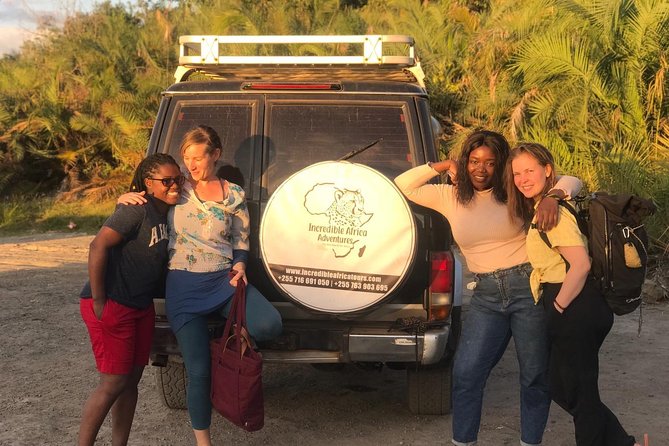
Altitude acclimatization is a critical aspect of a successful Kilimanjaro climb. As the ascent gains elevation, the air becomes thinner, and the body must adapt to the decreased oxygen levels.
To minimize the risk of altitude sickness, the Marangu Route follows a gradual ascent, allowing climbers to acclimatize gradually.
The key elements of acclimatization include:
- Slow and steady pace to allow the body to adjust.
- Proper hydration and nutrition to support the body’s adaptation.
- Monitoring for signs of altitude sickness, such as headaches, nausea, and fatigue.
Guides, Porters, and Support Team
The Kilimanjaro climb relies on an experienced and dedicated support team to ensure the safety and success of each expedition. This includes professional mountain guides who are expertly trained in navigation, first aid, and emergency procedures.
Porters carry the bulk of the expedition’s gear, allowing climbers to focus on the physical demands of the ascent. The team also includes a skilled cook who prepares nutritious meals to fuel the climbers.
Throughout the trek, the support staff monitors the group’s well-being and provides any necessary assistance or equipment. Their expertise and commitment are essential for guiding adventurers safely to the summit and back down.
Post-Climb Recovery and Celebration
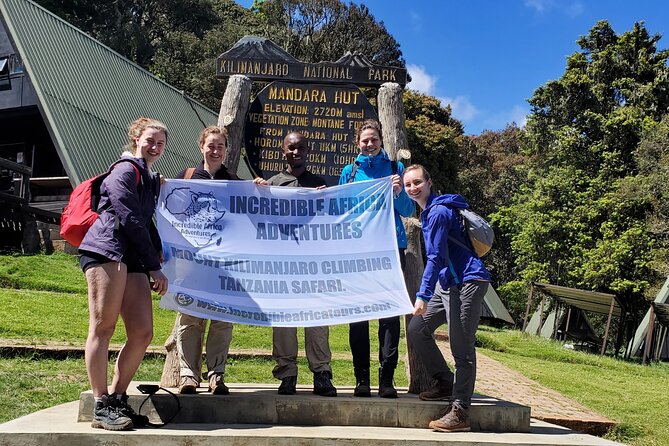
After the exhilarating trek, climbers wind down and recuperate at their hotel in Moshi. The post-climb experience allows them to revel in their accomplishment, celebrate with fellow adventurers, and prepare for the journey home.
Some key highlights include:
-
Relaxation and Rejuvenation: Climbers can indulge in well-deserved rest, relax their muscles, and enjoy hearty meals to replenish their energy.
-
Camaraderie and Storytelling: Climbers share stories, swap photos, and bond over the shared experience of conquering Kilimanjaro.
-
Exploration and Cultural Immersion: Climbers may have the opportunity to explore the vibrant town of Moshi, interact with the local community, and enjoy the Tanzanian culture.
Frequently Asked Questions
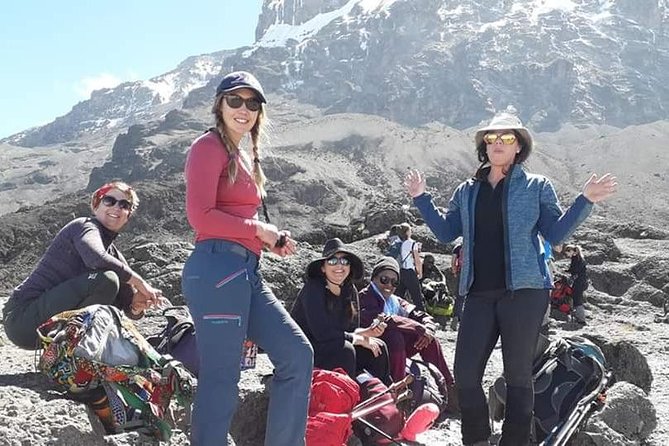
Climbers often wonder about various aspects of the Kilimanjaro climb, and the tour operator is prepared to address their concerns.
How fit do I need to be? A strong physical fitness level is required, as the climb is demanding.
Can I bring my children? The tour isn’t recommended for children, as the altitude and exertion can be dangerous.
What if I get sick? The tour includes emergency first-aid and oxygen, and guides are trained to handle altitude-related illnesses.
What should I pack? A detailed packing list is provided to ensure climbers have the necessary gear.
With thorough preparation and the right support, the Kilimanjaro climb can be an unforgettable experience.
Frequently Asked Questions
Can I Rent Hiking Gear at the Starting Point?
Yes, hikers can rent hiking gear at the starting point. The tour provider offers rental equipment like trekking poles, sleeping bags, and hiking boots to ensure participants have the necessary gear for the climb.
How Difficult Is the Marangu Route Compared to Other Routes?
The Marangu route is considered the easiest of Kilimanjaro’s hiking routes, though it’s still a challenging trek. It has gradual inclines but requires strong fitness levels. Compared to other routes, it’s less strenuous but takes longer to reach the summit.
Is There a Minimum Group Size for This Climb?
The website does not specify a minimum group size for this Kilimanjaro climb. It states the tour is a private activity, so travelers can book it for their own group without a minimum requirement.
Can I Extend My Stay After the Climb in Moshi?
Yes, you can extend your stay after the Kilimanjaro climb in Moshi. The tour operator offers additional accommodations and activities in Moshi before or after the climb, allowing you to extend your trip as desired.
Do I Need Any Special Permits or Visas for This Climb?
You’ll need a valid passport and a Tanzanian visa to participate in the Kilimanjaro climb. The tour operator can assist with obtaining the necessary permits to access the national park. Proper documentation is required for this activity.
Recap
The Marangu Route is a popular choice for those seeking a comfortable and accessible climb up Kilimanjaro. The gradual ascent, hut accommodations, and experienced support team make it a great option for many adventurers. Climbers can focus on the journey, assured of the necessary guidance and resources to reach the summit safely and memorably.
More 6-Day Experiences in Moshi
More Tour Reviews in Moshi
Not for you? Here's more things to do in Moshi we have recnetly reviewed
- 7 Best 3 Day Tours In Moshi
- 14 Best 4 Day Tours In Moshi
- 2 Best Private Car With Driver Services In Livingstone
- 4 Best Private Car With Driver Services In Moshi
- 15 Best Coffee Tours And Tastings In Moshi
- Marangu Route 6 Days 5 Nights/Kilimanjaro Climb
- Private 5-Days Serengeti Trails With Kojuu Safaris
- Full Day Private Safari – Tarangire National Park
- 9 Days 8 Nights Walking Safari
- Mt Kilimanjaro Climbing; 6 Days Machame Route
- Kilimanjaro Climb – 6 Days Marangu Route
- 5 Days African Safaris
